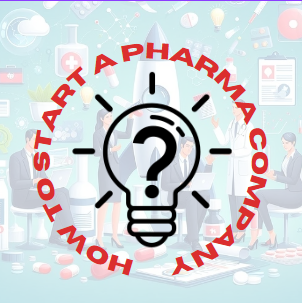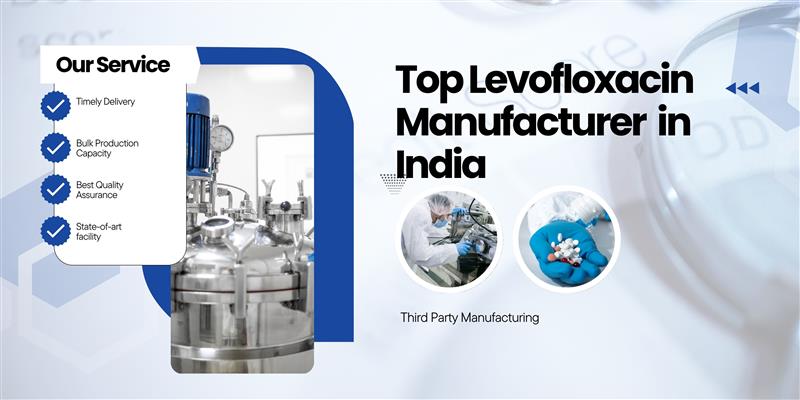
How to start a pharma company – can be a rewarding journey, but it’s also a complex and challenging venture. The pharma company is ripe with opportunities for innovation and growth. With the right planning, marketing strategies and most importantly sucessfully passing the R&D as well as FDA approval process, you can make a significant impact in healthcare. This guide will walk you through the essential steps for how to start a pharma company.
Understanding Basics before Knowing How to Start a Pharma Company
It’s essential to comprehend the pharma company’s environment before getting into the specifics of how to start a pharma company. This is a large and dynamic sector that is always changing due to new developments in medication development, shifting laws, and shifting consumer demands.
As an illustration, Pfizer, one of the biggest pharmaceutical corporations in the world, didn’t get there overnight. Years of study, wise acquisitions, and a thorough grasp of market demands are the foundation of their success story.
To get a grasp on the pharma Company:
Trends in the Market: Keep abreast of the most recent trends. Are there any new illnesses on the rise? What difficulties does medication development currently face?
Prospects:
Determine the market’s gaps. Maybe there is a breakthrough medical technology that might completely change treatment, or maybe there isn’t an inexpensive drug available for a certain condition.
Obstacles:
Recognize the obstacles, which include expensive R&D expenses, strict laws, and fierce rivalry.
Developing a Comprehensive Pharma Company Plan
A well-crafted pharmaceutical business plan is your roadmap to success. It outlines your vision, strategy, and the steps you need to take to achieve your goals.
Key Components of a Business Plan:
Executive Summary: A brief overview of your business idea, including your mission and vision.
Market Analysis: Detailed research on your target market, competitors, and market demand.
Company Description: An outline of your company structure, ownership, and the products or services you plan to offer.
Organization Structure: Information on your management team and employee roles.
Product Line: Detailed descriptions of your products, including their development stage and potential benefits.
Marketing Strategy: Your plan for reaching and engaging your target audience.
Financial Projections: Detailed forecasts of your financial performance, including funding requirements, profit margins, and break-even analysis.
Example: Consider Moderna, which strategically focused on mRNA technology, leading to their groundbreaking COVID-19 vaccine. Their business plan likely included detailed market analysis and a clear focus on innovative technology.
Navigating Legal and Regulatory Requirements
Complying with laws and regulations is one of the most important things when beginning a pharma company. Although navigating these rules might be difficult, doing so is crucial to the success and validity of your business.
Steps to Ensure Compliance:
Company Registration: Choose a suitable business structure (e.g., LLC, corporation) and register your company.
Licenses and Permits: Obtain necessary licenses and permits at the local, state, and federal levels.
Regulatory Bodies: Learn about the regulatory agencies in your area, such as the US Food and Drug Administration. Recognize their rules and specifications.
FDA Approval Process:
While strict, the FDA approval procedure is essential to guaranteeing the safety and effectiveness of drugs. Preclinical research, clinical trials, and a thorough analysis of your drug’s safety and efficacy data are all included in this procedure.
Example: Before new medications, like the COVID-19 vaccinations, are approved for use in the general population, they must pass several stages of clinical testing to guarantee they fulfill all safety and efficacy requirements.
Investing in Pharmaceutical Research and Development
Research and development (R&D) are the heart of any pharma company. It’s where new drugs are discovered, developed, and tested.
Steps in R&D:
Drug Discovery: Identify potential drug candidates through laboratory research.
Preclinical Trials: Test the drug in labs and on animals to assess its safety and efficacy.
Clinical Trials: Conduct trials on humans in multiple phases to further evaluate safety and efficacy.
Example: R&D is a major investment for Gilead Sciences, a company well-known for its antiviral medications. Remdesivir is a COVID-19 therapy that was developed as a result of their study.
Setting Up Manufacturing and Ensuring Quality Control
Once your drug passes the initial phases, it’s time to set up a manufacturing facility.
Setting Up Manufacturing:
Facility Setup: Invest in a facility that meets industry standards and regulations.
Equipment: Purchase necessary equipment for drug production.
Staffing: Hire skilled personnel for various roles in the manufacturing process.
Quality Control:
Quality control is vital to ensure your products are safe and effective. Implementing Good Manufacturing Practices (GMP) is a must.
Example: Johnson & Johnson has state-of-the-art manufacturing facilities with rigorous quality control measures to ensure the highest product standards.
Developing Effective Marketing Strategies for A Pharma Company
Marketing your pharmaceutical products effectively is crucial to reach your target audience and drive sales.
Marketing Strategies:
Digital Marketing: Utilize SEO, social media, and content marketing strategies to reach a broader audience.
Traditional Marketing: Use print media, trade shows, and networking to promote your products.
Healthcare Professionals: Build relationships with doctors, pharmacists, and healthcare institutions.
Example: Merck uses a combination of digital and traditional marketing strategies to promote their products and engage with healthcare professionals.
Establishing Distribution Channels
Efficient distribution is key to getting your products to the market.
Steps in Distribution:
Supply Chain Management: Develop a robust supply chain to ensure timely delivery of your products.
Partnerships: Collaborate with distributors, wholesalers, and retailers.
Logistics: Implement effective logistics and marketing strategies to manage transportation and storage.
Example: AstraZeneca has a global distribution network that ensures their products are available in markets worldwide.
Navigating the FDA Approval Process
Navigating the FDA approval process is a critical step in bringing your drug to market.
Steps in the FDA Approval Process:
Preclinical Research: Conduct lab and animal tests to assess safety and efficacy.
Clinical Trials: Perform multiple phases of clinical trials on humans.
New Drug Application (NDA): Submit an NDA to the FDA for review.
FDA Review: The FDA reviews your application, conducts inspections, and decides on FDA approval process.
Example: The rapid approval of COVID-19 vaccines by companies like Pfizer and Moderna demonstrates the critical role of the FDA approval process in ensuring drug safety and efficacy.
Exploring the Biopharmaceutical Sector
The biopharmaceutical sector offers exciting opportunities for innovation.
Understanding Biopharmaceuticals:
Biopharmaceuticals are drugs derived from biological sources.
Advantages: They offer targeted treatments with fewer side effects.
Challenges: High R&D costs and complex manufacturing processes.
Example: Amgen, a leader in biopharmaceuticals, develops biologic drugs that target specific molecular pathways, offering advanced treatments for various diseases.
Continuous Improvement and Expansion
Your initial product is not the end of your journey. Long-term success requires constant expansion and improvement.
Continuous Improvement:
Innovation: Keep investing in R&D to develop new and improved products.
Feedback: Use customer and market feedback to refine your products and processes.
Expansion:
New Markets: Explore opportunities in emerging markets.
Product Line Expansion: Include new therapeutic areas in your product offering to diversify it.
As an example, in order to maintain its leadership position in the pharmaceutical industry globally, Roche continuously expands the range of products it offers and looks into new markets.
This was all you need to know whenever this question “How to start a pharma company? ” comes to your mind. Establishing a pharma company involves commitment, careful planning, and in-depth knowledge of the required marketing strategies. These steps will help you overcome obstacles and launch a profitable pharma company. Recall that the secret to success is constant learning, creativity, and adjustment to the dynamic environment of the pharmaceutical sector.




